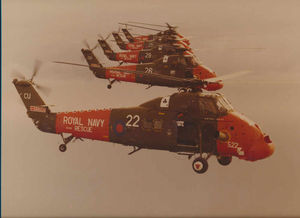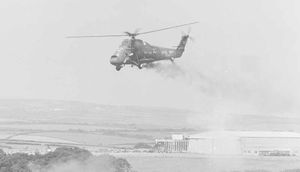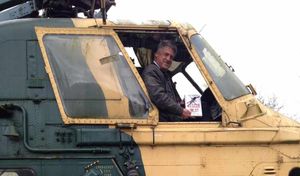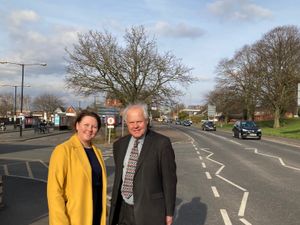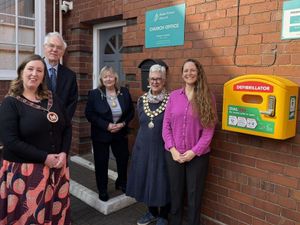Guardian in the sky: Heroic pilot tells all
It was one of the biggest maritime disasters in British history claiming the lives of 15 yachtsmen - now it has inspired a new book by one of the heroic rescue pilots who risked his own life to lift dozens of stranded boaters to safety.
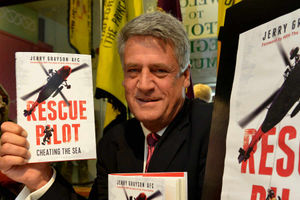
A total of 303 yachts set out from Cowes for the 1979 Fastnet race but only 85 reached the finish line in Plymouth after a hellish storm hit the Irish Sea sparking a large-scale rescue operation over a number of days.
"Fastnet was the worst storm I have ever been in by a long, long way," said pilot Jerry Grayson promoting his book Rescue Pilot at Staffordshire Regiment Museum, near Lichfield, on Thursday.
"I was the first one out and the last back. It was a stressful three days." he added.
That is perhaps something of an understatement from the 59-year-old who earned an Air Force Cross from the Queen for his efforts at the time.
Mr Grayson said it was only recently while researching for his book that he came to understand the reason for the ferocity of the storm which was caused by two separate storms colliding on the south west coast of England.
"This gigantic storm came out of nowhere, people were forecasting a Force 7 or 8 but it went up to 12 which was something else," he said.
"The waves were like nothing I had ever seen before and I have seen nothing like them since.
"Twenty to 30ft waves came from two different directions and doubled each other like cliffs coming towards us. They went up to 40 to 45ft and were completely vertical, like mountains."
But despite the terrifying scale of the watery wall thundering his crew's way, Mr Grayson explained how he had to maintain his Wessex HU5 helicopter at 15ft above sea level to avoid it becoming too dangerous for the winchman plucking boaters from the sea.
"It was the only time I have ever hesitated," he said. "However bad these yachts were they were still floating yachts. They may have been very, very ill but they still posed grave dangers."
And although he says the true extent of his lifesaving actions have only just dawned on him, the pilot never lost sight of how critically important his instructions to the desperate yachtsmen were at the time.
"The minute I ask someone to jump in the water I better be sure I can get them out otherwise I have consigned them to a watery end," he said.
Fastnet is just one chapter in Rescue Pilot, launched earlier this month, and one of a countless number of tales from Mr Grayson's extraordinary career. The Sussex born man went straight into the Navy fresh out of sixth form after being inspired by the promotional posters of servicemen in 'cool visors'.
At 17 he became the youngest ever naval pilot initially posted to the HMS Ark Royal flying Sea Kings to hunt and destroy enemy submarines in the Cold War before serving in search and rescue. By 25 he was the most decorated peacetime naval pilot around.
After leaving the Navy in 1988 to set up his own helicopter company Mr Grayson admitted he has always wanted to write a book about his experiences but only gained the courage after reading the account of Nick Ward - the last man to be pulled out of the water in the Fastnet disaster.
"I was reading his story thinking no-one has heard this from the perspective of the helicopters and that was the catalyst for my book," the pilot added.
Now living in Australia, he has spent several weeks in the UK researching the book meeting former sea mates and people he has rescued.
"When you go through tough times with people, you have a huge emotional attachment which makes getting together again something special. There are a lot of hugs."
Mr Grayson has met with people he has rescued to validate his own memories of events which took place more than 30 years ago.
"I had started to no longer believe in my own stories, I though I was exaggerating but the yachties have all said 'No that is how it happened," he said.
But the book has been a good excuse for the pilot to hunt down his old flying machines and have personal reunions with the helicopters that he affectionately refers to as 'her' or 'she' which he explains is a naval thing.
And one of them - a Wessex Mark 5 - is based here at the Staffordshire Regiment Museum in all of 'her' glory.
"I flew her in 1979 and 1980 a total of 25 times, five of which were rescues," he fondly recalls. "I have been sitting in the cockpit trying to remember how to start her. She is a lovely, lovely aircraft I am thrilled to be reunited."
But his connection to the machines runs deeper than the odd pang of nostalgia. It is obvious that the pilot is not caught up in his own heroism and has a firm appreciation for not just his crew, but the hands that built his aircraft.
In fact he took this particular helicopter to the Rolls Royce factory near Manchester - where she was made - to explain to workers that their own skills had saved lives.
And while some of his old choppers have been lost or destroyed for uses such as fire training Mr Grayson said he was 'sad' to see machines such as the Wessex he flew in Fastnet now sitting as paintball targets.
"She deserved better than that, we feared we might not have the power to get over the huge waves at Fastnet but the Wessex was incredibly powerful," he said.
In 1989 he launched Helifilms which specialises in aerial filming for Blockbuster films such as Black Hawk Down or major sporting events such as the 2010 World Cup in Africa.
But in a week which has seen a tragic plane crash in the French Alps and a difficult salvage operation because of the nature of the terrain, Mr Grayson admitted he does not get the urges to go back to his search and rescue days.
He said the only time he felt 'odd' was at hearing the news that his 'mates' were flying out to assist in the Falklands War while he was embarking on his new commercial venture.
But ultimately his years as a rescue pilot, now chronicled in this new book, have rightly given him a huge sense of pride - one that is only now beginning to settle in.
Pilot Grayson said: "I was reading through some coastguard records of the rescues I had done and one particular guy I had picked up out of the water was 35 at the time. I realised he would be 70 now.
"It really brought me up short. I just thought wow I hope he has enjoyed the extra 35 years he has had."
Visit www.rescuepilot.net for more information or to purchase the book.
